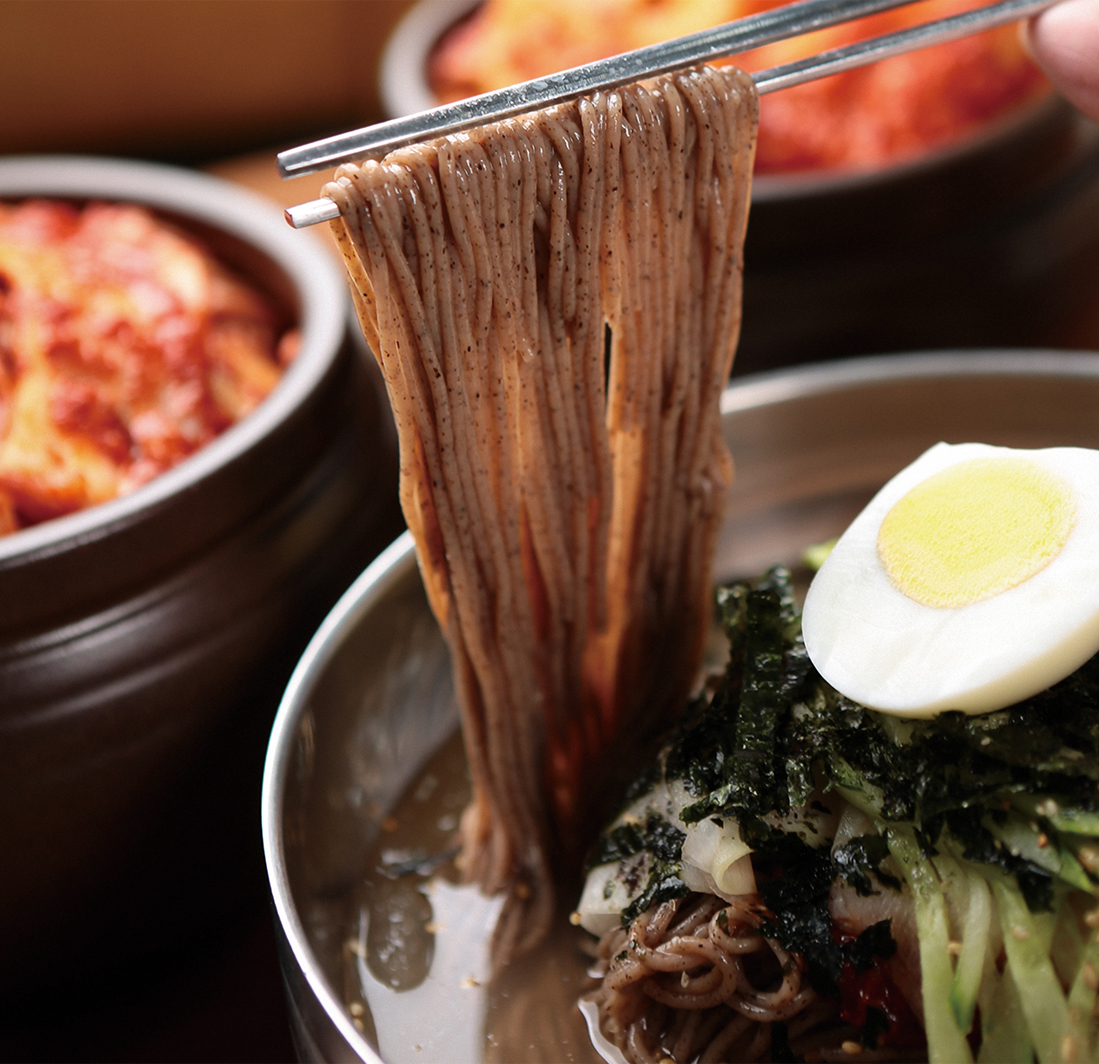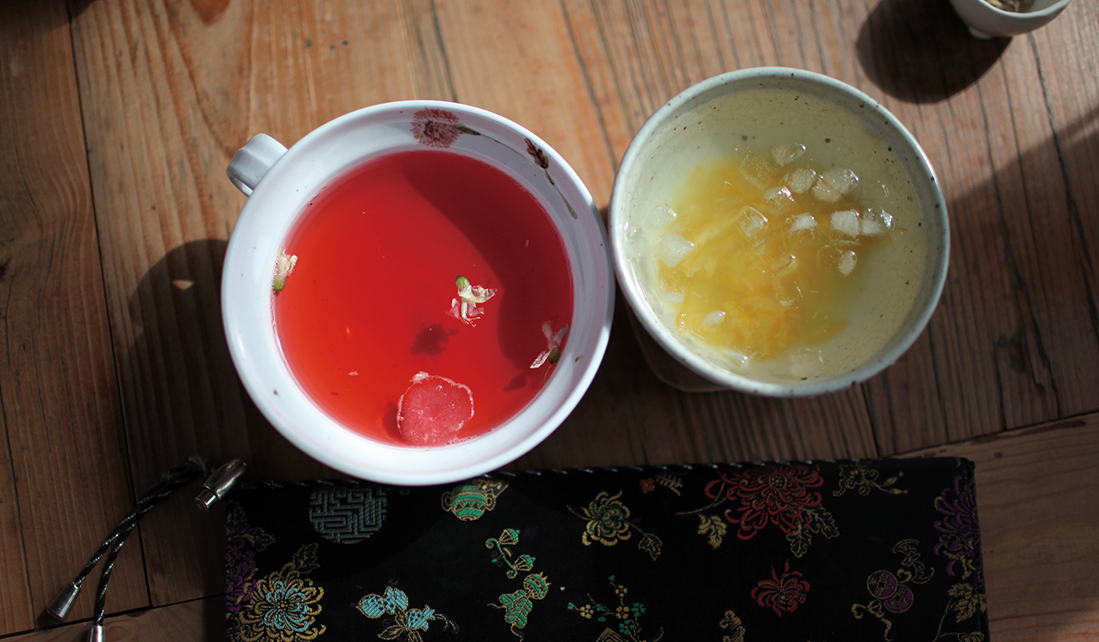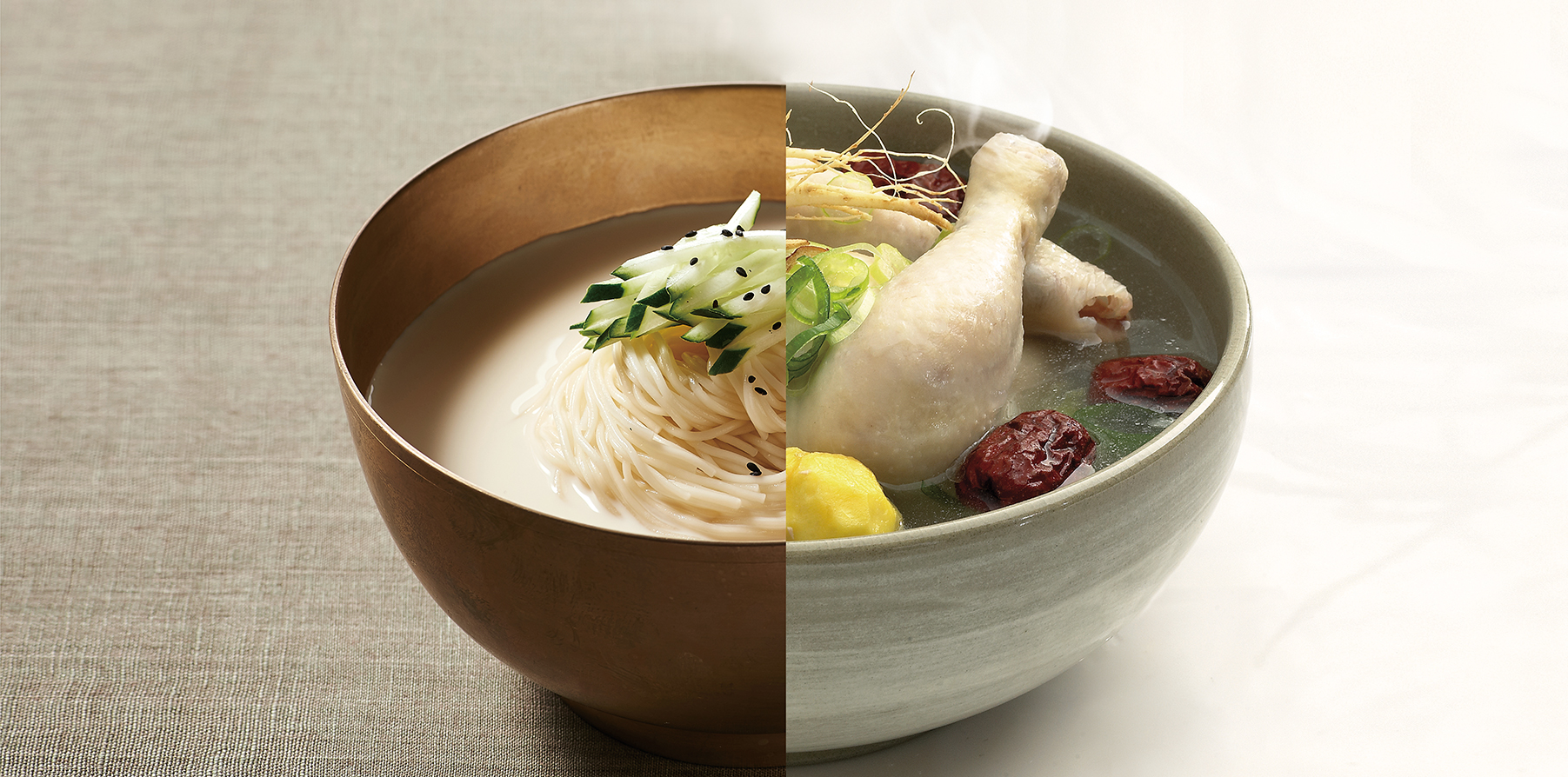Culture Vulture
Song of Ice & Fire
Korean Summer Food
Temperatures rise sharply on the Korean Peninsula from June to August, along with humidity levels. As such, staying well-nourished and hydrated is important, as I learned quite abruptly in the summer of 2007. Fortunately, Koreans have developed two very different — and very effective — strategies that help people breeze through the summer months.
Written by • Tim Alper
I had visited Korea a couple times before moving there, though never in summer. I arrived in Korea to reside there in early 2007, and May and early June proved idyllic with sunny, hot and dry days and cooler evenings. But midway through June, things changed suddenly. In came the summer monsoon, and with it a heat and accompanying humidity that I — coming from blustery, northerly Britain — had never experienced before. I soon discovered that I was feeling lethargic and low on energy. Then I quickly realized the importance of choosing one’s meals carefully on days like these.
Strategy I: Stay Cool

A variety of chilled noodle dishes help diners fuel up on carbs. © shutterstock
When the weather is hot, it seems perfectly logical to combat the heat with chilled — or even ice-cold — food.
As such, refreshingly frosty fare comes to the fore as June begins, including kongguksu, or noodles served in a cold broth of ground soybeans. This dish is so ubiquitous in summer that it suddenly appears on the menus of all sorts of eateries, even those specializing in foreign cuisine.
Other cold noodle dishes are also popular around this time of the year. One is makguksu, a specialty of Gangwon-do Province. Also served cold, these noodles are made of buckwheat topped with thick, spicy gochujang (red pepper) sauce and served with shredded dried seaweed.
Naengmyeon (cold noodles), which originated in what is now North Korea, is great for meat lovers thanks to its rich, partially frozen beef broth flavored with pear.
Aside from noodle dishes, Korea offers plenty of sweet treats. Ice cream is a big part of the diet in summertime. Because it is so inexpensive and popular, huge freezers full of all sorts of ice-cold sugary snacks are at convenience stores, supermarkets and other stores nationwide.

Iced omija (five-flavor berry) tea (left) and yuzu (yuja) tea (right) tend to be sweeter than regular tea but healthier than fruit-flavored drinks. Omija is a berry and yuzu a citrus fruit, and both are renowned for their distinct fragrance and health benefits. © shutterstock
The snacks come in all shapes and sizes like popsicles and cones, all variously shaped like giant goldfish, sharks, heads of corn and even watermelon slices.
Many Korean ice cream brands have been around for decades, and buying ice cream here inevitably sparks nostalgic conversations about which variety was one’s favorite back in their childhood days. Koreans will often eat one of these snacks and muse, “I haven’t had one of these in years, but the taste hasn’t changed at all.”
My own secret weapon in the summer months is naengguk, which literally means “chilled soup.” Usually made with kelp or cucumber (or sometimes both), this simple dish features sliced vegetables lightly pickled in vinegary water and often laced with flavorful garlic and onions. A slightly milder version with whole beansprouts is also popular.
People familiar with Russian summer cooking will immediately think of cold borsht, another chilled soup served straight from the fridge that — like naengguk — also comprises generous amounts of vegetables, vinegar and onion.
Served ice cold, chilled Korean soups have as their best feature briny water, which provides a welcome tonic on a blazing hot day. Diners find it hard not to wolf it all down in one satisfying gulp.
Strategy II: Turn Up the Heat

Samgyetang is a chicken soup filled with strength-boosting herbs like jujube (daechu) and ginseng (insam). © shutterstock / Yukgaejang (spicy beef soup) contains beef brisket, taro stems and red chili powder. © shutterstock
All of these cool dishes will bring a smile on a hot day, but many Koreans recommend a more effective way to fight the summer heat. The iyeul chiyeul (roughly translated as “fight fire with fire”) approach is based on traditional Korean medical principles of the way the body deals with heat.
When outdoor temperatures rise, Koreans respond by turning up the heat in the kitchen. And on summer’s fiercest days, out comes a range of bubbling broths and protein-rich fare, grilled to white-hot temperatures over furnace-like hot coals.
Summer is the season for samgyetang, a whole poussin or spring chicken boiled in a broth containing jujubes and chestnuts and stuffed with ginseng and sticky rice. The theory goes that eating this dish at piping-hot temperatures helps the diner sweat freely, cooling the body as the meal progresses. Its protein-rich nature is also a welcome boost on days when appetites can flag and leave the body needing as much nutrition as possible.
The same theory is applied to jangeo (grilled eel), another surprising summer specialty. Freshwater eel is abundant on the Korean Peninsula thanks to its mineral-rich muddy estuaries.
Eel happens to be in season in summer, so most fishing crews are careful not to overfish, leaving eels to breed in peace at other times of the year.
Typically, jangeo is served in one of two ways: grilled with salt (sogeum gui) or marinated in a sweet-and-spicy sauce (yangnyeom gui).
The eel is cut into bite-sized pieces and cooked over coals on a diner’s table. Plucked straight off the grill, the fish is thought to boost stamina, which is often felt deficient in the Korean summer heat. For those feeling adventurous, try a steaming bowl of delectable jangeotang (eel stew).
For people with an upbringing like mine, the idea of hot food on a scorching day sounds bizarre. But though I went through my first iyeul chiyeul experience as an unbeliever, I left as a convert. Hot food, at least in my experience, does seem to somehow help keep fatigue at bay during Korean summer.

Grilled jangeo (eel) is either marinated in a sweet-and-spicy sauce (yangnyeom gui) or evenly salted (sogeum gui). © Studio Kenn
Middle Path
While diners can choose the path of ice or the road of fire during Korea’s hot summers, why not dine like a native by mixing it up a little? Many Koreans like to get the best of both worlds by sailing through the season fueled by both ice and fire, alternating their food philosophies freely.
Super-cooling mealtimes today, then super-heating them tomorrow lend variety, flavor and an unfailingly refreshing way to stay hydrated and well-nourished during Korea’s hot summers.



















